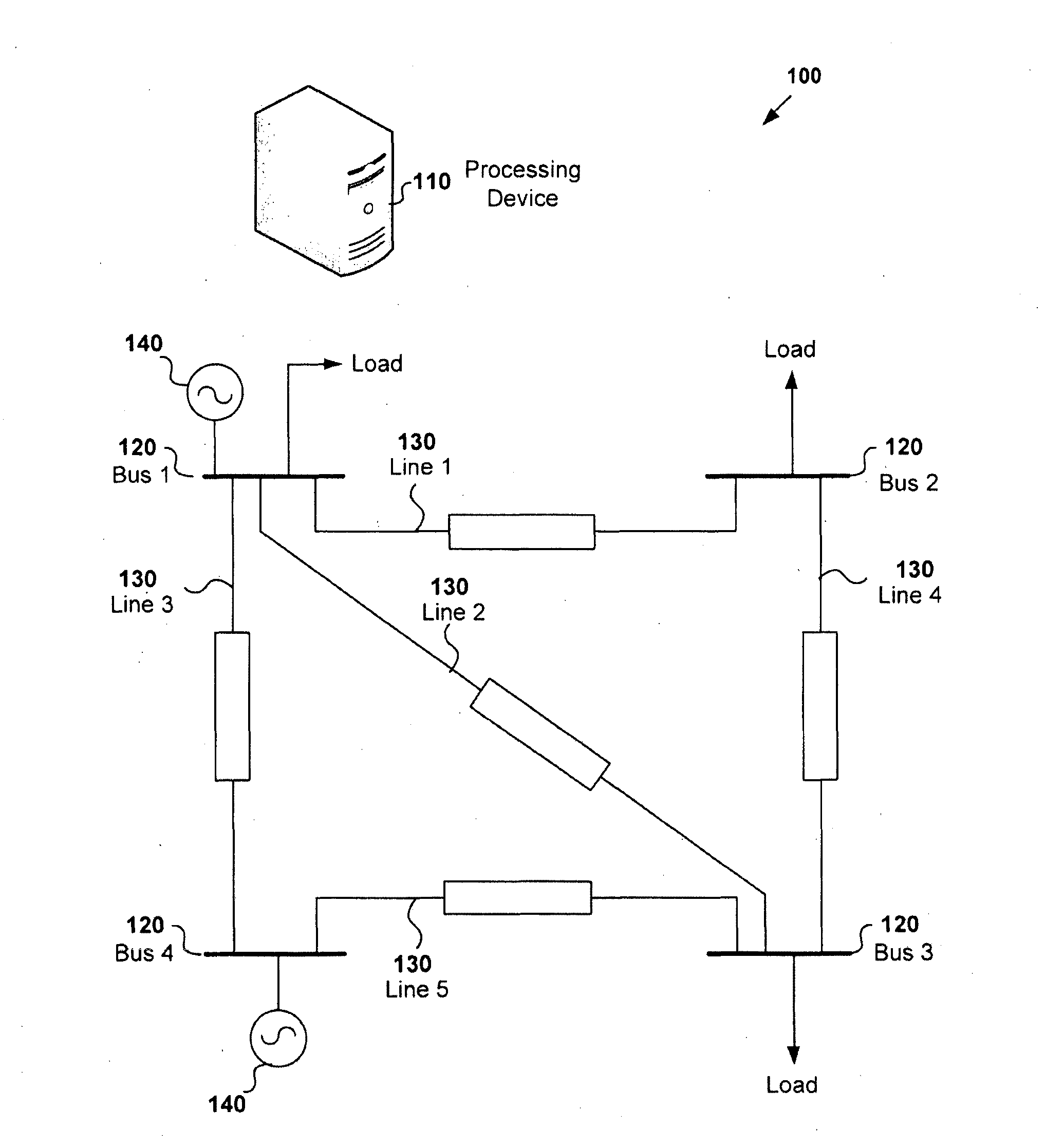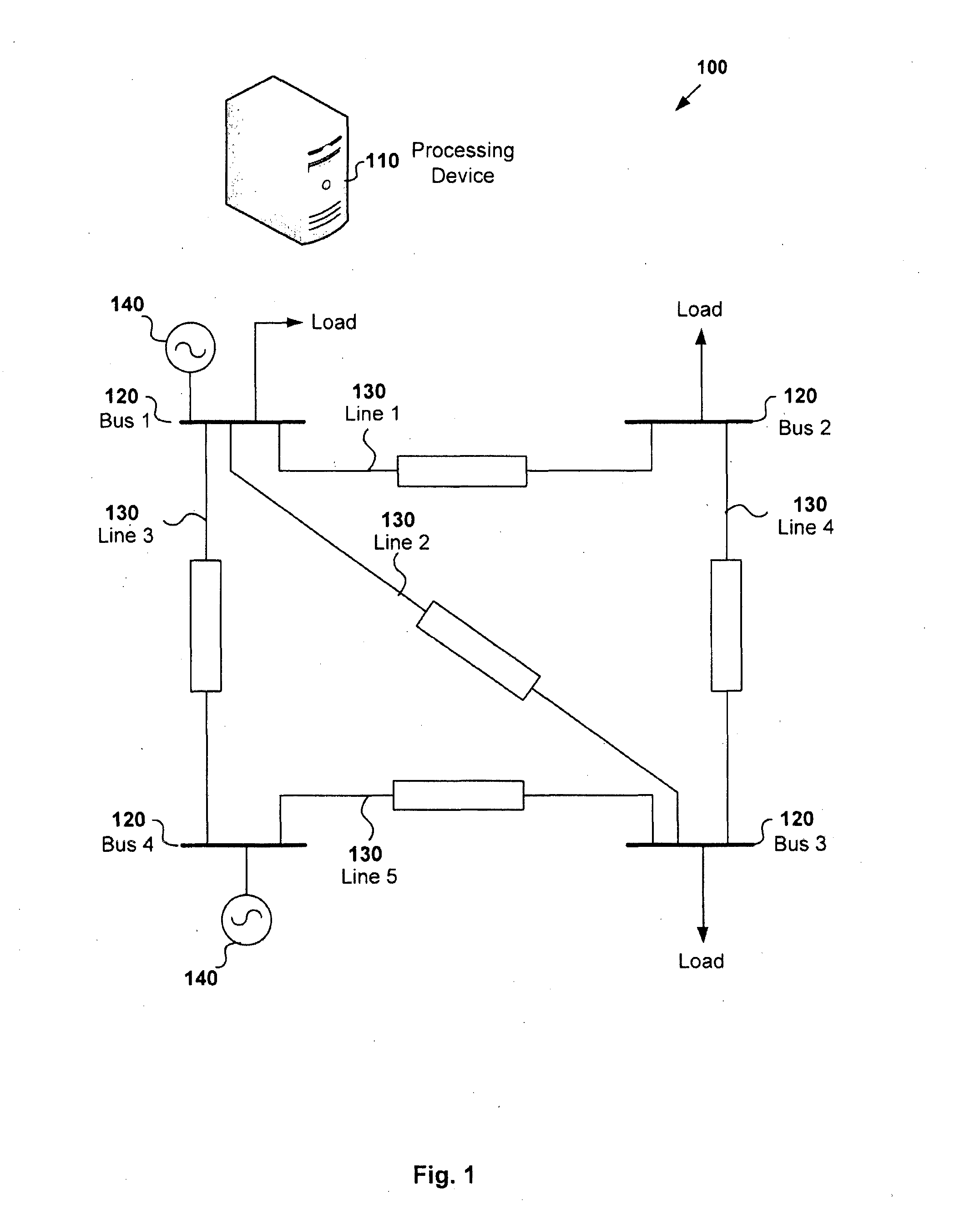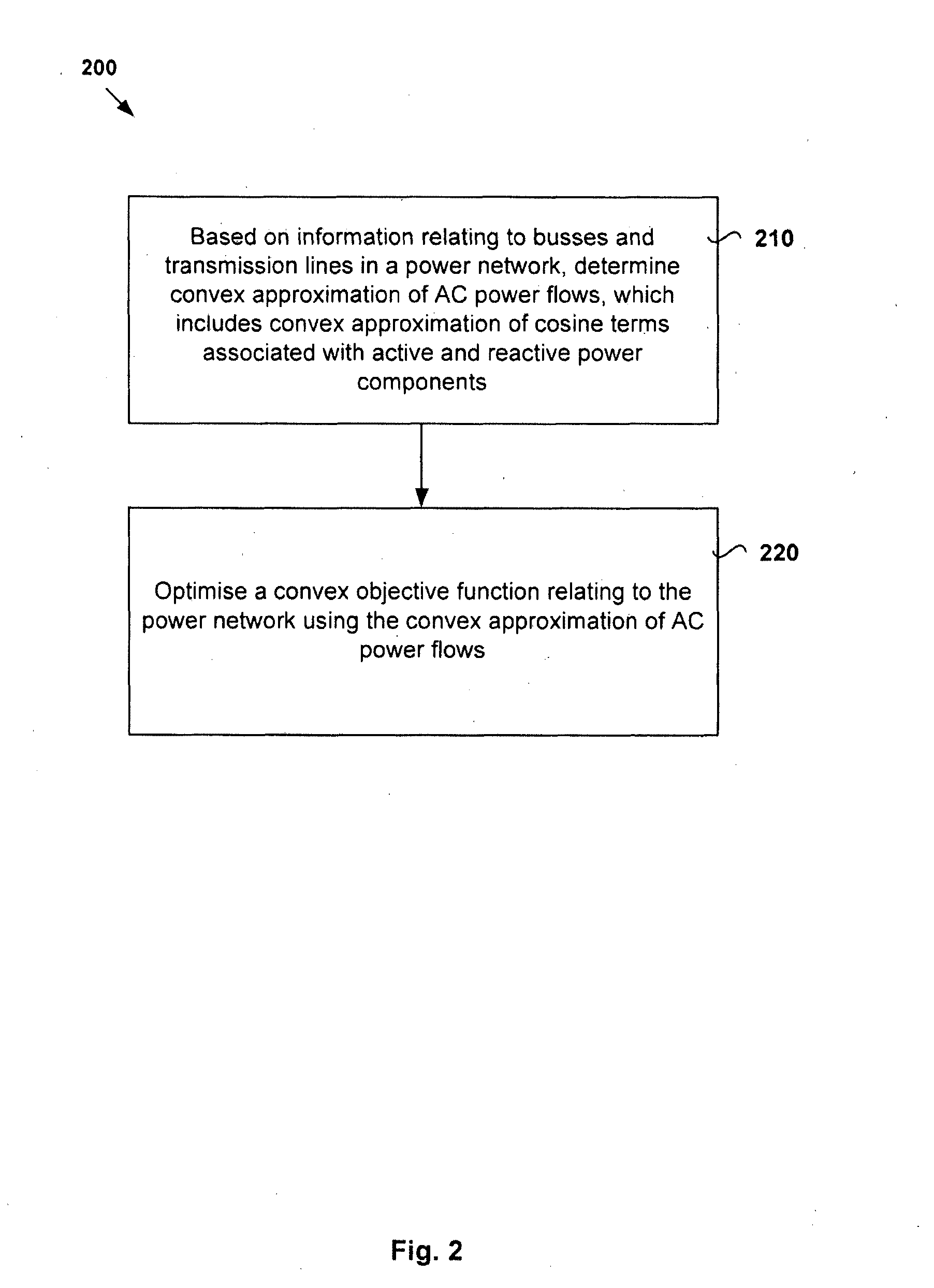Alternating current (AC) power flow analysis in an electrical power network
a technology of ac power flow and electrical power network, applied in the field of computer-implemented methods for ac power flow analysis in electrical power network, can solve the problems of new challenges in the planning and control of electrical power system, and achieve the effect of reducing the cost of generating electricity
- Summary
- Abstract
- Description
- Claims
- Application Information
AI Technical Summary
Benefits of technology
Problems solved by technology
Method used
Image
Examples
case study 1
(a) Optimal Power Flow
[0287]The goal of the optimal power flow problem (OPF) is to find the cheapest way to generate power in order to satisfy customers' demand given some quadratic cost functions on generators. For each generator n E G, the cost of generating power is defined by the quadratic function cn″(png)2+cn′(png)+cn. A classic OPF problem consist of minimizing the generation cost Σn∈Gcn″(png)2+cn′(png)+cn subject to the AC feasibility constraints defined in Model 6.
[0288]For the QPAC model, the OPF problem may be formulated as follows:
Model 9: QPAC Optimal Power Flow ProblemInputs:Inputs from Model 6 (The AC Feasibility Model)Variables:Variables from Model 6 (The AC Feasibility Model){circumflex over (p)}nmloss ∈ (0, |{tilde over (S)}nm|) - active losses on line nm (MW p.u.)q^nmloss∈(0,S~nm_)-reactivelossesonlinenm(MVarp.u.)n ∈ (|{tilde over (V)}n|2, |{tilde over (V)}n|2) - an approximation of |{tilde over (V)}n|2{circumflex over (v)}nm ∈ (0, ∞) - convex relaxation of (|{til...
case study 2
(b) Capacitor Placement
[0292]The Capacitor Placement Problem (CPP) is another well-studied application and many variants of the problem exist. This section uses a simple version of the problem to demonstrate how the QPAC model may be used as a building block inside a Mixed Integer Quadratic Program (MIQP) solver for power systems applications that feature discrete variables, a major computational challenge for existing technologies.
[0293]Informally speaking, the CPP consists of placing capacitors throughout a power network to improve the voltage profile. The version studied here aims at placing as few capacitors as possible, while meeting a lower bound |{tilde over (V)}| on the voltages and satisfying a capacitor injection limit qC and reactive generation limits qng(n∈G).
[0294]Model 9 presents a CPP formulation based on the QPAC feasibility problem (Model 8). For each bus n∈N, the additional decision variables are the amount of reactive support added by the capacitor qnc and a varia...
PUM
 Login to View More
Login to View More Abstract
Description
Claims
Application Information
 Login to View More
Login to View More - R&D
- Intellectual Property
- Life Sciences
- Materials
- Tech Scout
- Unparalleled Data Quality
- Higher Quality Content
- 60% Fewer Hallucinations
Browse by: Latest US Patents, China's latest patents, Technical Efficacy Thesaurus, Application Domain, Technology Topic, Popular Technical Reports.
© 2025 PatSnap. All rights reserved.Legal|Privacy policy|Modern Slavery Act Transparency Statement|Sitemap|About US| Contact US: help@patsnap.com



